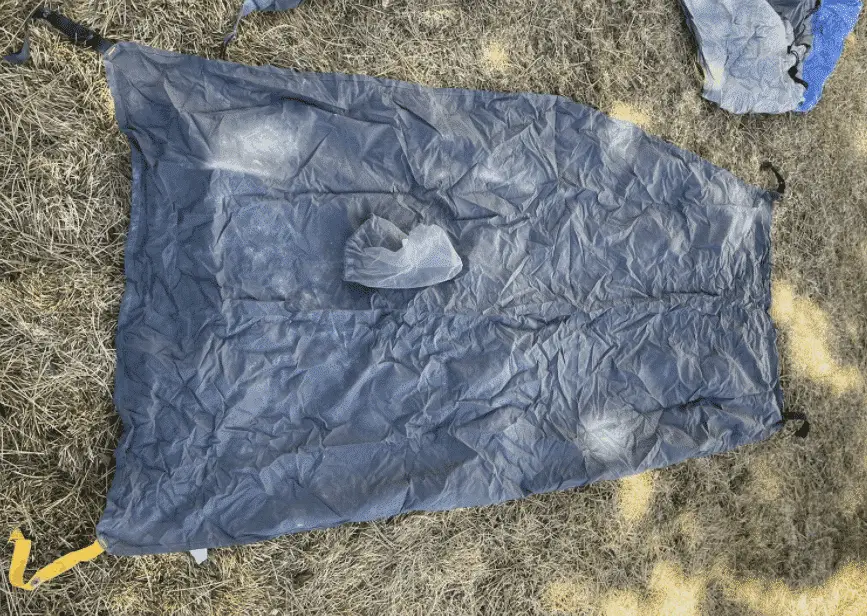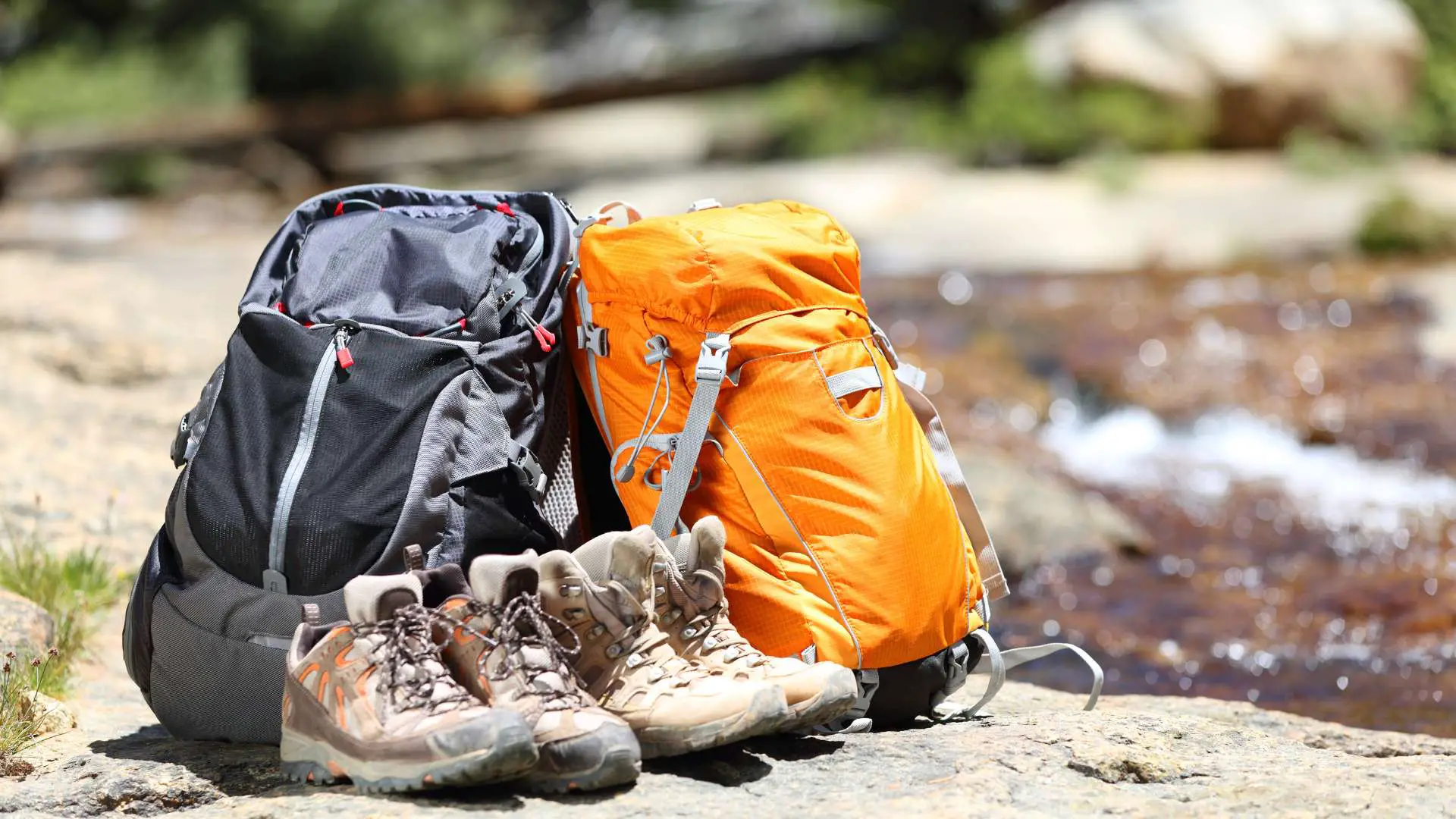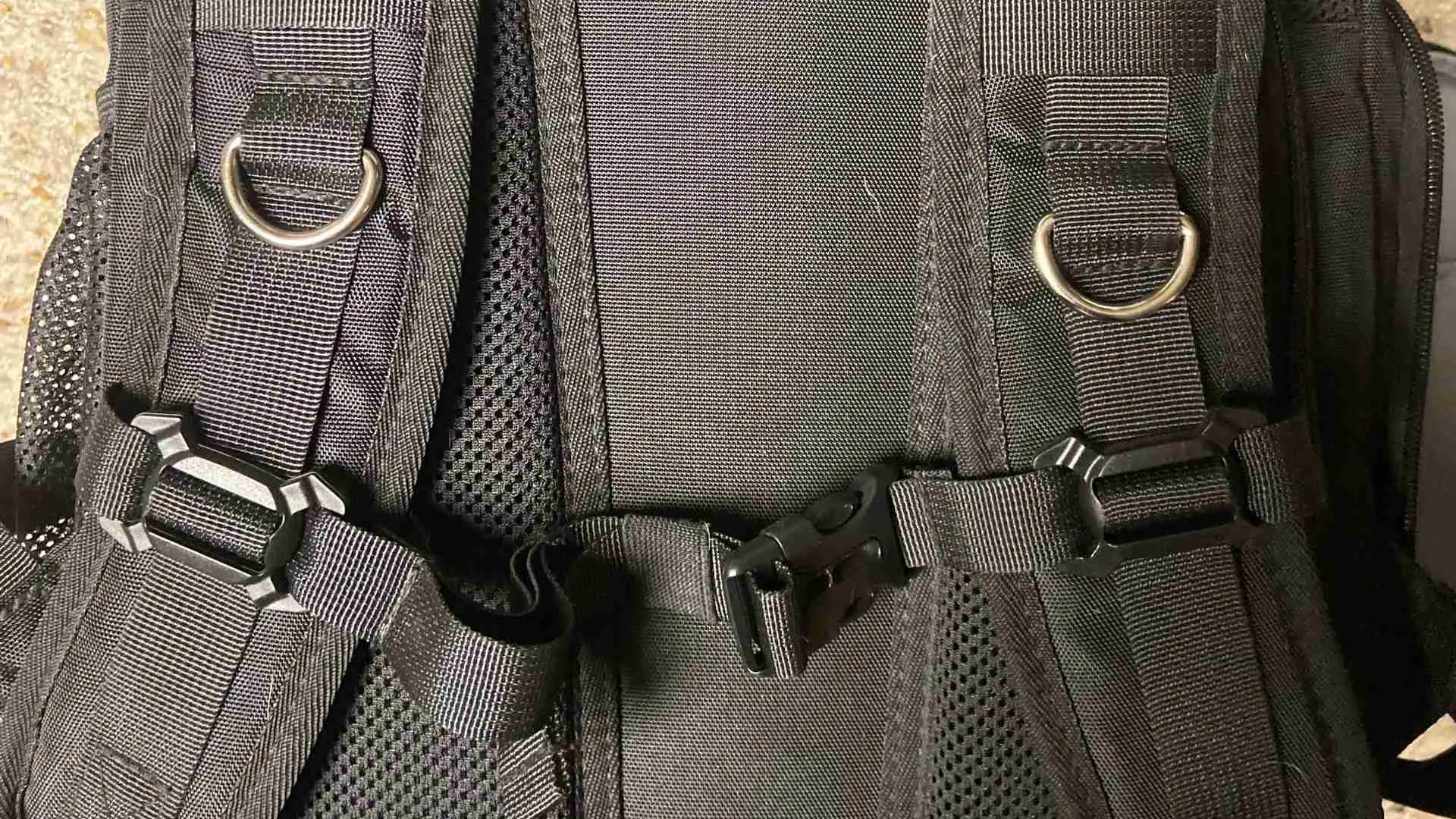Do I Really Need a Tent Footprint? I’ve heard that question countless times throughout the years. There’s lots of confusion over tent footprints. What do they actually do? What is The Purpose of a tent footprint?
You don’t need a tent footprint, but it will help protect the bottom of your tent. A footprint will protect your tent floor from abrasive twigs/stones that will eventually wear holes in your floor. Plus it will protect your tent from mud and grime.
Let’s face it! Tents can be very expensive. Unless you’re camping in a cheap $20 Walmart tent, you should try to protect your investment with a cheap tent footprint. You don’t even need to spend much money to protect your tent. I’ll go over a few budget options below if you don’t want to fork over the cash on a real footprint.
Do I Need a Tent Footprint?
Tents really are fragile, when you think about it. There’s just a thin layer of fabric protecting you from the great outdoors. That’s all you really need, but it doesn’t take much to damage an expensive tent.
A tent footprint gives you an extra layer of protection against physical wear. It takes the brunt of the damage when setting up on rough gritty ground. You don’t have to worry about sticks and sharp stones working their way through the floor of your tent.
Is it Worth Buying a Tent Footprint?
Before going out and purchasing a footprint you should ask yourself if it’s really necessary. Think about the thickness of your tents floor, cost of the tent and how often you plan on backpacking. If you’re a once a year camper with a cheap $20 tent it’s probably not worth investing in a footprint. Just throw away the tent after a few years and buy another one.
A footprint protect the bottom of your tent from abrasion, mud and moisture. It extends the life of your tent and helps keep the inside dry(if you purchase the right size). It’s cheap and lightweight insurance for your expensive gear. Here’s a few scenarios that you should consider before buying a footprint.
| When It’s Worth It | It’s Not Worth It |
|---|---|
| You plan on camping on rough with a high potential for sharp edges. Areas with lots of debris from downed trees/branches and rocky areas with sharp jagged edges. | You own a cheap tent that you’re not worried about damaging. |
| Go on lots of camping trips with expensive gear. Definitely buy a footprint if you plan on camping more than a week per year. A footprint will extend the life of your tent making sure it lasts years. | Don’t want to carry additional weight. Ditching the footprint will reduce your pack weight by half a pound. That’s a big deal for ultralight backpackers. |
| The weather looks bad and you’re expecting a lot of rain. A footprint will protect the bottom of your tent from mud making it much easier to clean. | Camping in manicured grass and your not expecting bad weather. |
| Not worried about a little extra weight. A footprint weighs 5-10 oz so it’s the first thing that gets ditched buy ultralight backpackers. Car campers on the other hand would be stupid not to include one. |
Do I Need To Carry A Tent Footprint?
Personally, I rarely carry a tent footprint. I’ve logged many nights on the trail and experienced little damage to my tents floor. I might get the occasional puncture, but that can easily be repaired with a piece Gear Aid’s Heavy Duty Tenacious Tape (Duct Tape Works in a pinch). I keep a few small patches in my first aid kit to take care of punctures.
I still recommend buying a footprint even though I rarely use mine. It’s perfect for your typical car camping trip when weight isn’t an issue. Plus it will protect against mud/moisture making it so much easier to clean the tent when you get home.
If you think you may have a use for a tent footprint, I recommend buying one. Even if it’s on an irregular trip by trip basis, buy the matching footprint as you purchase the tent. Why do I recommend purchasing a footprint with the tent? It’s because new tent models come out every camping season and you’ll never find a footprint that perfectly matches the floor of your tent.
Your tent footprint has to be a few inches smaller than the inside of your tents floor. You’ll end up with pooling water if it sticks outside the bottom of the tent. Buying an aftermarket footprint is definitely an option, but it will be hard to find one that fits your tent perfectly.
Protects Against Rough Edges
Seasoned backpackers/campers with quality gear should spend the extra money and protect their investment. Little twigs and pebbles may not seem like a big deal but they can quickly wear their way through the bottom of your tents floor. A footprint add an extra layer of fabric to extend the life of your tent.
Protects Against Mud
I’ve gone through a lot of tents in my life. I buy and sell my camping gear ever couple of years as my preferences change. Throughout the years I’ve worn holes in the bottoms of my tents only a handful of times and most of those could be patched up with a piece of Tenacious Tape.
The main reason I carry a footprint is to protect against mud. Cleaning mud off the bottom of your tent is a serious pain in the butt. You have to setup the whole tent, tip it over to hose off and leave it up to dry. A footprint will keep the majority of the mud off your tent.
A footprint makes cleaning so much easier. Just spread it out on your driveway and hose her off. An hour or so later it should be dried off by the sun and ready to put away.
Choosing a Tent Footprint
I recommend purchasing the footprint that’s specifically designed for your tent. It will be the perfect size and grommets will already be in place to slip your tents poles through. That will be by far your easiest option.
Choosing a tent footprint for an older tent can be somewhat difficult. Most tents go out of production after a 1-2 year run so the footprint will no longer be available. There are a few after market options and you can always make your own(read the following section).
Purchasing an aftermarket footprint can be a serious challenge. Make sure the footprint is 2-3 inches smaller than the outside edge of your tent so water doesn’t pool. You can always fold the edge under your tent if it’s a little too big, but I recommend sewing a small seam to shrink it down.
Alps Mountaineering’s Tent Floor Saver comes in various sizes based on how many people the tents designed for. They may or may not work for you so pay attention to the dimensions of the footprint. You might find a generic tent footprint on Amazon that will work if none of those do the job. I own cheap Terra Hiker Camping Tarp and REDCAMP Footprints and they’re both really nice.
If you can’t find a footprint that fits I recommend making your own by reading the following section.
Budget Options

Tent footprints really aren’t all that expensive, but there a few budget options to choose if you can’t find one that perfectly fits. The only downside is they tend to be heavier and won’t fold up as well. This isn’t a big deal if you plan on going car camping.
You can use any old tarp as a tent footprint. Just make sure you fold the sides in so the water doesn’t pool up if it rains. I actually bought a cheap handheld grommet tool to custom make a footprint out of a tarp.
Just lay the tarp down and setup the tent on top. Cut the edges of the tarp even with the tent. Fold the edge back 3 inches and start putting grommets along the fold. Make sure you have a grommet on the corner for the tents pole to slide inside. You might even want to put a small loop in the corner with a grommet to make things easier.
Any type of heavy duty plastic will also work. The ultralight community really likes window wrap plastic and Tyvek homewrap. They’re lightweight cheap and you can cut it to any size. While you’re likely to save some weight by using a plastic footprint it will probably be more expensive.



